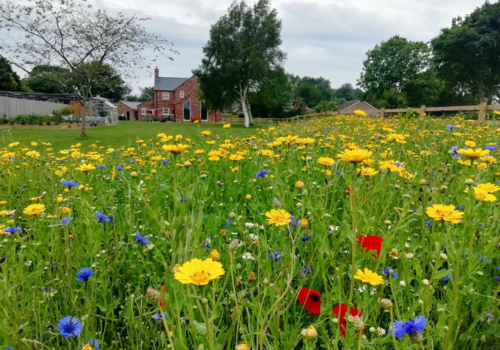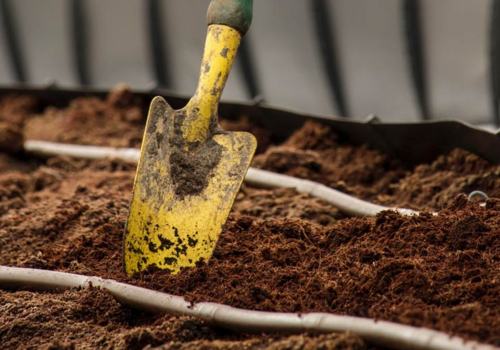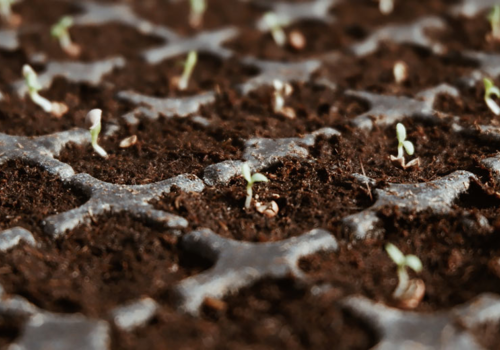Wildflowers add beauty, biodiversity, and ecological benefits to any landscape. Many gardeners and nature enthusiasts wonder whether they can simply scatter wildflower seeds onto existing grass to create a vibrant meadow. Here, we tell you what to do to achieve success.
Challenges of Scattering Wildflower Seeds on Grass
While it may seem simple to scatter wildflower seeds over a grassy area, successful germination and growth face many challenges, including:
• Competition for resources – grass is a dominant plant that competes aggressively for nutrients, sunlight, and water, often outcompeting delicate wildflower seedlings.
• Seed contact with soil – for wildflower seeds to germinate, they need direct contact with the soil. If seeds sit atop grass blades, they will not take root properly.
• Shade and density issues – even if wildflower seeds do germinate successfully, thick or fast-growing grass can shade out emerging wildflower seedlings, preventing them from thriving.
Identifying your existing grass type is very important, as wildflower seeds are very unlikely to compete with perennial ryegrass, the most common lawn grass in the UK. Lawns that are predominantly comprised of fescues and other finer-leaved grasses are most suitable for scattering wildflower seeds, but good preparation is still essential. The most successful way to establish wildflower seeds is always to start with bear soil, wherever possible.
How to Sow Wildflower Seeds on Grass Successfully
To increase the chances of successful wildflower establishment, follow these steps:
Choose the right wildflower seeds - select wildflower species that are hardy and capable of competing with grass. UK native wildflower seeds will have a better chance of establishing themselves, while a mix of annual wildflower seeds and perennial wildflower seeds will ensure continuous blooms over time. Our Restore & Enrich Wildflower Seed BSRE 100% contains 22 different annual and perennial UK native wildflower varieties that can be sown directly on to grass.
Mow the grass short - before scattering seeds, mow the existing grass as short as possible (about 1-2 inches). This will give the seeds the best possible chance of germinating by reducing competition and allowing seeds to reach the soil more easily.
Rake or scarify the soil - after mowing and before scattering seed, lightly rake the soil or use a scarifier to create small openings. This exposes some bare ground where wildflower seeds can settle and germinate.
Scatter seeds evenly - mix the seeds with dry sand or compost to help distribute them evenly. Scatter the mixture by hand or use a lawn seed spreader for larger areas. The BS Mini Handheld Spreader is ideal for small lawned areas and the BS Seed and Fertiliser Rotary Spreader will cope well with larger spaces such as paddock and orchard areas.
Press wildflower seeds into the soil - after sowing, lightly press the seeds into the soil using a roller or by walking over the area. Avoid covering them with soil, as many wildflowers require light to germinate.
Water and maintain – after sowing, water the area lightly but consistently for the first few weeks to keep the soil moist.
Once established, most wildflowers require little maintenance but you should be prepared to manage weeds as they can compete with wildflowers. Avoid fertilising the area heavily – wildflowers often thrive in poorer soils. Our wildflower seeds advice hub contains lots of articles about successful wildflower establishment.
When to Plant Perennial Wildflower Seeds
Autumn - this is the best time for sowing, as seeds will undergo natural stratification (cold exposure), leading to better germination in spring. Grass growth also slows down in the autumn compared to spring, reducing competition for the new wildflower seeds.
Early spring – seeds can also be sown in early spring once the risk of frost has passed, but they may take longer to establish, and face more competition from grass and weeds.
For more advice on this, read When can you plant Wildflower Seeds?
Wildflower Turf
While you can scatter wildflower seeds on grass, laying wildflower turf will yield more immediate results. This innovative way of introducing biodiversity quickly into an area involves laying grass turf that essentially has wildflowers growing in it. Landscape 34 Wildflower Turf® contains over 30 varieties of UK native wildflower varieties and grasses, and will thrive in both shade and light, and give weed-free results.
Wildflower Seeds from Boston Seeds
Scattering wildflower seeds on grass can work, but success depends on preparation and maintenance, as outlined here, and on the wildflower seeds you sow. At Boston Seeds, we have been supplying wildflower seeds for over 20 years, and are partners with the conservation charity, Buglife.
We have created annual wildflower seed mixes like our Cornfield Annual Wildflower Seed BS9P 100% and perennial wildflower seed mixes specifically developed to attract pollinators (Bees and Butterfly Wildflower Seed BSBP 100%). By mowing, raking, and choosing the right seed mix, you can encourage a beautiful, natural wildflower meadow to flourish. Whether for aesthetics, biodiversity, or supporting pollinators, a wildflower-rich lawn is a rewarding and eco-friendly landscaping choice.
To find out more about our selection of wildflower seed mixes, or to ask advice from our team of experts, contact us today by email or phone on 01205 280069.


